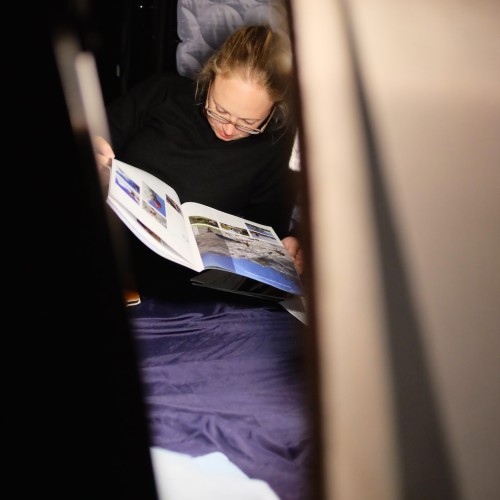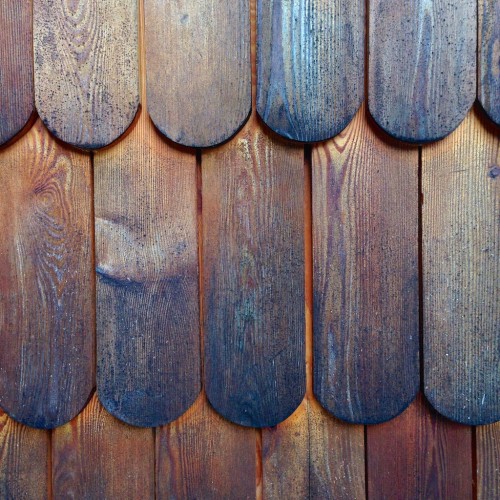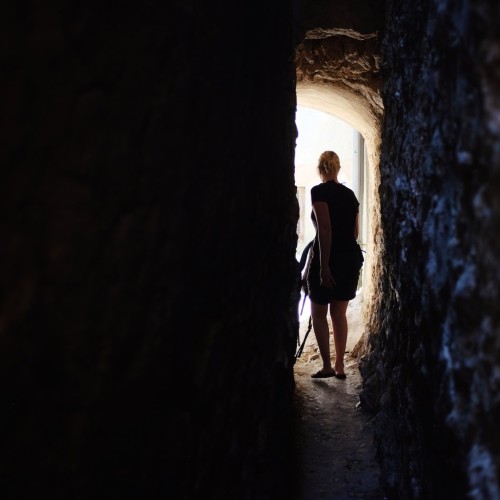
Week 4: I feel sLOVEnia
“I feel sLOVEnia”, the banners read. There were two banners as we drove into Bled, the first as you enter town and a second as you turn onto the road circling the lake. At first I thought they should change it to “I sLOVEnia” or just “sLOVEnia” – I didn’t get“I feel sLOVEnia”. But after three days’ relaxing next to the lake, I finally got it. It’s got a great feel to it. The people are great. The place is great. I totally feel sLOVEnia.
During the past week we’ve travelled from Lake Bled, to Kobarid via the Julian Alps, to Portorož on the coast of Slovenia, and into Croatia to spend a few nights on the island of Krk. In Slovenia we’ve been confronted yet again by the horrors of the First World War, whilst in Croatia we’ve seen remnants from more recent conflicts. We’ll most likely spend the rest of the week in this fascinating country.

Slovenia
Slovenes love the outdoors and it was obvious at almost all the campsites we visited during our Slovenian visit. They do campsites very well and they got the balance right between being in the wild, but with a few key luxuries thrown in. At Lake Bled we stayed at Camping Bled and Kamp Koren gave us shelter against a violent thunder storm in Kobarid. At Kamp Koren Sarah also met Nina and Ales who have just finished walking from Tagliamento (Italy) – Soča (Slovenia) in order to raise awareness of the state of rivers in the Alps. You can show your support and read all about it on their website, River-Walk.
It was jaw-dropping arriving at Lake Bled. The place had an immediate and lasting impact on me. The small island and its pilgrimage church was a magnet to the eye for most of the duration of our visit around the lake. I just couldn’t stop looking at it. Nor taking photos of it! Lake Bled is a young place with loads of backpackers and nightclubs and yet it feels undiscovered and uncrowded. There are several hiking trails around the lake with two of the most popular being the very steep climb to either Ojstrica or Osojnica. We did both and both were spectacular. It takes about thirty minutes to get to the top, but it is completely worth it.
We braced the mountain passes again and travelled to the Soča Valley via the Julian Alps in the Triglavski National Park. At times the mountains were covered by a blanket of threatening storm clouds, but when we did get glimpses of Slovenia’s highest peaks, it was impressive.

The lush green forest and the aquamarine water of the Soca River Valley revealed a terrible secret. It was home to the Eastern front during World War One and was the backdrop to one of the bloodiest theatres of the war. Ernest Hemingway also used the setting for his book, A Farewell to Arms. Some call it a forgotten front, but in such a beautiful place it was very hard to imagine that nearly a million people lost their lives or were injured in the Soca Valley. In one incident 110 Russian POW’s and their guards were killed by an avalanche. Their surviving comrades built a small chapel at Vršič to commemorate the incident.
We didn’t have to dig deep to find remnants of the war. Even the campsite had a small cabinet displaying items found around the site. A helmet, several grenades, a rusty canteen, and other personal effects of men with unbeknown fates. The town of Kobarid houses a war museum and some of the several hiking trails around the area takes you right past and through some of the key locations. Today the area is an adventure sport mecca.

The last night in Slovenia we spent in Portoroz near the beautiful villages of Piran and Izola. We stayed at Camp Lucija at the coast with its cool marina-side pitches, but loads of noise from the hotels and clubs across the bay. On top of that during the night a sudden storm came up and we woke up to the camper van shaking and the awning flapping like a flag in the wind. Needless to say, the next morning we headed further south in search of sunshine and calmer weather.
Croatia
We took a shortcut through Italy and soon regretted it. The satnav and the Italian roadsigns appeared to have conspired in wanting us to drive in circles and a journey that should’ve saved us at least two hours, took two hours longer! Finally we arrived on the island of Krk. The sun was out and we could take a dip in the ocean. We’ve been looking forward to it for so long and finally it was here. On Krk we mostly lazed on the beach at an excellent campsite (Camp Slamni), but we did manage to make a day-trip to Vrbnik, a pretty town dating back to 1388 and home to Klancic Street (also known as 40cm street, or as the numerous signs advertise around town, “the narrowest street in the world”).
Croatia is much busier than Slovenia and even other Mediterranean places we’ve been before, but we love it. In the next week we’re aiming to see a bit more of the old cities and visit more of the islands.

Trip stats (Wk1 – Wk4):
After four weeks on the road, we’re changing the weekly statistics slightly and hopefully making it more useful for others planning a similar trip. The week averages currently reflect the more expensive countries such as Belgium, Germany, Switzerland and Austria and we expect these averages to come down slightly over the coming weeks.
- Current location: Krk, Croatia
- Days on the road: 28
- Distance travelled: 3391 km
- Countries visited: Belgium, Luxembourg, Germany, Switzerland, Lichtenstein, Austria, Slovenia, Croatia
- Cups of coffee: 62
- Pitched the tent 2 times.
- Camper awning pitched 11 times.
- Number of campsites: 18
- Average weekly cost for camping: £124.25
- Average weekly cost for diesel: £35.42
- Average weekly cost for food & groceries: £60.59
- Average weekly cost for ferries, tolls, parking and public transport: £55.27
- Average weekly cost for entertainment, museums, and other attractions: £37.07


















